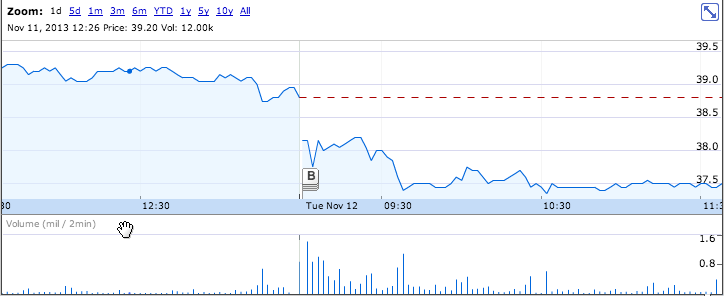Supply and iDemand
The influence of Apple is undeniable. The popular tech conglomerate recently launched its sixth generation iPhone and, for the first time, split the mobile platform into two models: the flagship iPhone 5S and the reasonably priced, but feature-restricted iPhone 5C. For one company based 6,465 miles from Apple’s cozy headquarters in Cupertino, California, the full influence of Apple and its consumer market is more present than ever.
Only a few weeks after the public release of the two new iPhone models, rumors purporting the early failure of the iPhone 5C began to flood technology sites[1]. By mid-October, these rumors found ground to hold their claims as The Washington Street Journal reported Apple had scaled back iPhone 5C orders from suppliers[2]. While speculation and concern equally arose regarding the demand of this less expensive model, one of the device’s primary suppliers, Pegatron, found themselves in a tough spot after a record-breaking quarter report.
As of early November, Pegatron reports decreased profits for their third-quarter net profit and a dismal outlook for their chance at competing in a marketplace full of successful suppliers including one of Apple’s largest suppliers: Foxconn[3]. The short-term rise and fall of Pegatron’s earnings can be attributed to many factors; chief among which are the notions of information cascades, direct-benefit, and the relationship of markets and beliefs.
When Apple first announced the inclusion of a secondary, less expensive and less robust iPhone model back in September, analysts and journalists speculated about the need for the device with the impressive flagship 5S and the continued sale of the outgoing iPhone 5 models. These commentaries along with reported initial sales figures of the iPhone 5S outselling the iPhone 5C two-to-one[4] despite price differences and availability soon created the common belief that the cheaper, plastic model was overpriced and not worth purchasing. Reviews and comments that questioned the price, features, and purpose of the iPhone 5C further worsened the reputation and direct-benefit value of the model until hitting a tipping point that spurred demand to decrease rapidly – prompting Apple to cut orders for the seemingly unpopular device.
After the initial launch window, the unpopularity and decreasing demand of the iPhone 5C grew alongside positive reviews and praise for the flagship 5S model. This, in turn, greatly impacted the decision-making process for numerous consumers who began to hold the belief that the iPhone 5S or comparable smartphone would be a better choice based on the available information and numerous signals to avoid the iPhone 5C. This information cascade not only further damaged the already dismal reputation of the plastic model but soon directly hurt the principal supplier, Pegatron.
For Pegatron, their quarterly financial report call held in early November after a reported stellar second-quarter net profit must have stung quite a bit due to the very short-lived nature of their success. Shareholders who initially bet on the continued growth and success of Pegatron following Apple’s decision to source them as a primary supplier were quick to “jump ship” as steady share prices dropped drastically following the report call.

Figure 1: Google Finance Overview for Pegatron Corporation for November 11, 2013 to November 12, 2013
With the trend in declining share price and predictions for very little growth in the fourth quarter[5], it comes as no surprise that investors have been quick to act on the market’s belief that the valuation of Pegatron will continue to decrease for this financial year.
While Pegatron’s fate is far from sealed – especially with the potential increased demand for iPhone 5C models during the upcoming holiday season – it is clear that a combination of information cascades, direct-benefit forces, and market beliefs have greatly prompted a reasonable level of concern internally and among shareholders of the Taiwanese corporation. From the retail stock of a product to the stock prices of a supplier, factors such as information signals, market demand, and common belief of user adaption rate can greatly affect all players in the chain of a single good. This is certainly the case with the rocky recent release of the iPhone 5C and its primary supplier, Pegatron, despite the continued success of Apple.
[3] http://appleinsider.com/articles/13/11/11/alleged-cuts-to-iphone-5c-orders-cited-as-apple-supplier-pegatrons-profits-disappoint
[4] http://www.dailymail.co.uk/sciencetech/article-2460820/Figures-reveal-Apples-iPhone-5S-outselling-iPhone-5C-2-1-US.html

nice information, and very usefull.. thanks